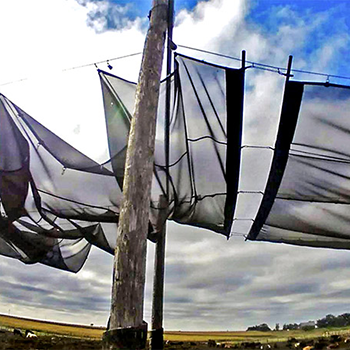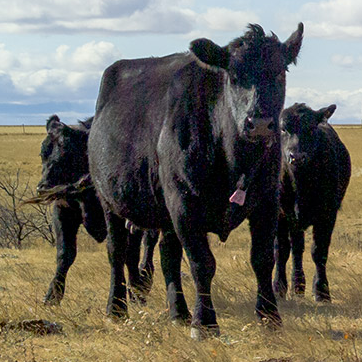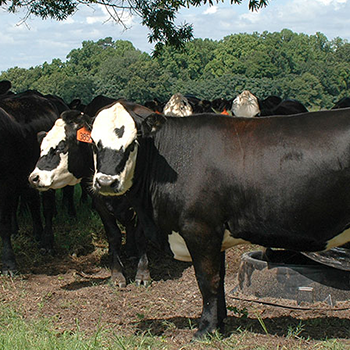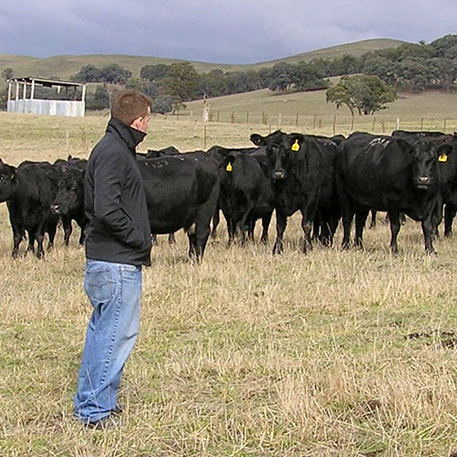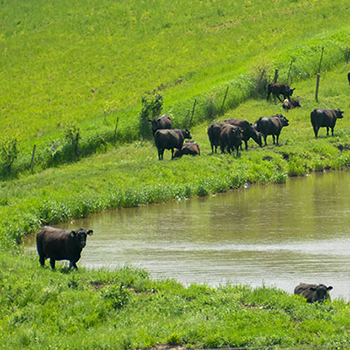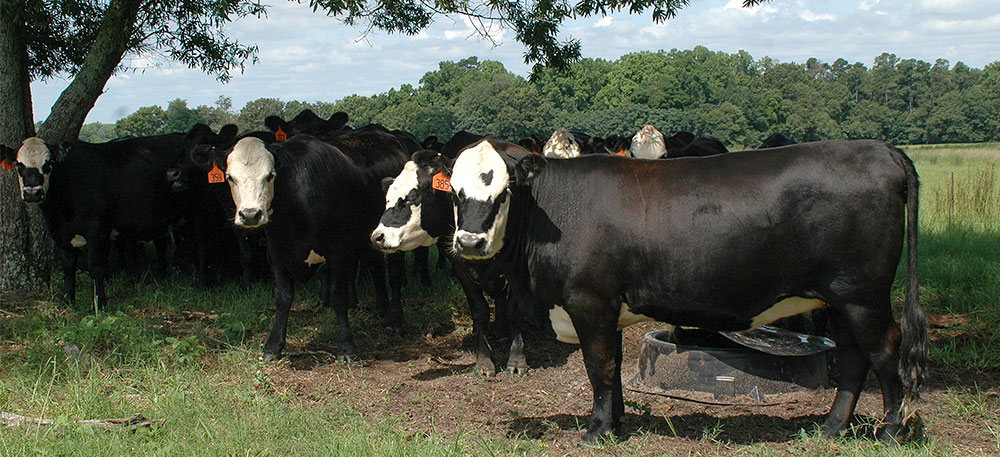
By Design
Summer shade to beat the heat.
The heat is on, and your bulls and nursing cows trying to rebreed can struggle to stay cool. To try to get away from the heat, cattle may flock to treed areas and water sources, which can cause destruction of the trees, erosion and reduced water quality.
Providing proper shade to heat-stressed cattle is crucial for improving rebreeding rates and performance of these cattle. While there are many options available to reduce heat stress with shade, stationary units reduce options for producers who rotate pastures and want to use more of their land without purchasing several units.
Additionally, lighter mobile units may be short-lived and destroyed over time by the weather, or blown away. The MidWest Plan Service (MWPS) offers one solution for this through construction of a portable shade system.
Airflow is important, so make sure the height of the shade accommodates proper airflow. In this example, the back of the shade is 8 feet (ft.) tall and the front is 10 ft. — but this may have to be increased if constructing a larger unit. Additionally, if you plan to leave the shade in one location, you’ll have to consider how much clearance you’d need to easily move equipment in to clean manure.
| Fig. 1: Portable shade diagram |
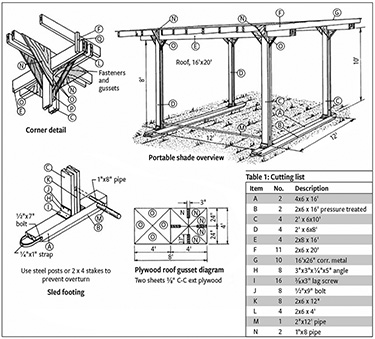 |
| Click here for larger image. |
Space underneath the shade is also necessary for adequate airflow to keep the area underneath cool, so make sure the shade is large enough to allow cattle underneath without being huddled together. Providing about 30-40 square feet (sq. ft.) per mature cow should accomplish this without restricting airflow, whereas 20 sq. ft. should be adequate for younger cattle.
Try to place shades away from trees and water sources to encourage use by cattle. Putting shades near other buildings or trees may reduce airflow under the shade. Often, an open spot on top of a hill works well to both draw cattle and also use the natural breeze to help keep cattle cool and comfortable.
While there are many options for cattle shade structures, consider what may work best for your operation prior to construction. For example, knowing how many summer days spent in critical heat may help you determine whether to use a galvanized steel roof, slats or cloth. How many times you move your cattle may help you determine how heavy your structure is.
This design in particular might not be absolutely perfect for your operation, but it can give you a place to start on providing additional comfort and relief to your herd during heat stress while boosting performance.
Editor’s note: “By Design” is a regular column featuring facility and homestead design for cattlemen. Katy Lippolis is an Extension beef cow-calf specialist at Iowa State University. Photo by Becky Mills.
